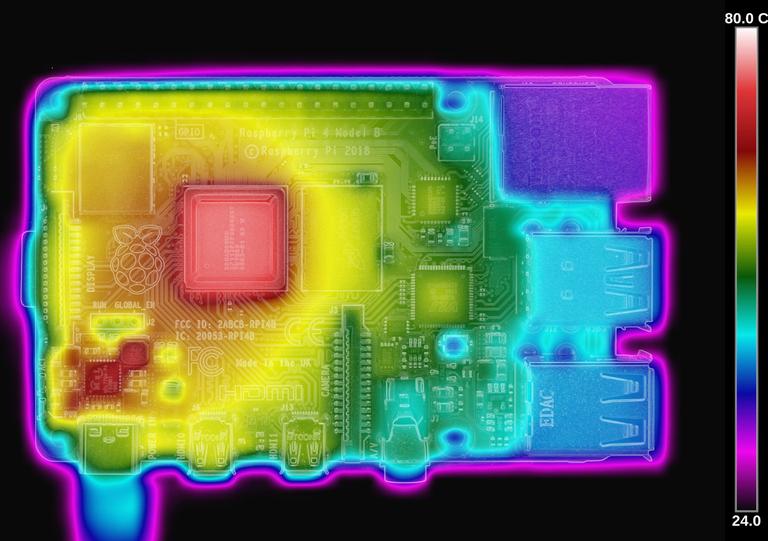Raspberry Pi 4: Big performances, but it heats a lot
Les premiers acheteurs ont été livrés de leur Raspberry 4, la fondation Raspberry Pi fait face à beaucoup de chauffe de l’appareil, mais des solutions existent.
The Raspberry Pi 4 makes a huge leap in performance, as we can see on the Tom’s Hardware test.With its Arm Cortex-A72 SOC (4 cores at 1.5 GHz), the performance obtained is 40 to 400 % higher than those of a Raspberry Pi 3+ depending on the benchmarks and what is tested.These are scores obtained on different tools that test the performance of CPU, GPU, but also from memory.On this side, Promise is clearly held especially for a product that displays a sale price of 38 euros including tax for the 1 GB version of RAM.
Unfortunately, the Raspberry Pi 4 faces much greater heating problems than those of the Raspberry 3.We can thus measure temperatures up to 80 degrees in the event that there is no thermal dissipation system.At this temperature level, the Raspberry Pi 4 must decrease its performance, and this obviously may damage the device.Personally, my Raspberry Pi 3 suffered a lot during the heat wave in Paris, so it is a situation that can happen quite regularly.
Solutions to this heating problem

Fortunately, an update of the firmware, currently being tested and whose public exit is scheduled for this month, offers an overview of the fruit of the foundation engineers: we are witnessing modifications that considerably reduce electricity consumptionof the VL805 controller, which allegedly cools the Raspberry Pi 4.Better yet, the firmware update does not seem to have an impact on performance.We observe that Raspberry Pi 4 consumes less electricity with the updated firmware installed: before update, he consumed 3.8 W on standby and 7.9 W in charge, with the new firmware, the measurement fallsat 3.4 W in standby and 7.6 W in charge.You can test the firmware, the Raspberry Pi Foundation Foundation published the version of the Alphavl805 of the firmware.
The best solution remains to opt for a passive or active cooling system, there are many very effective solutions.Either we use passive dissipators in the form of an aluminum plate or via a radiator, or directly a fan that we feed thanks to the card.
As a reminder, the Raspberry Pi 4 was very quickly out of stock when it comes out, starting with the version with 4 GB of RAM memory that we no longer find.You can still find 2 GB versions, but very expensive compared to the launch price.
To follow us, we invite you to download our Android and iOS application.You can read our articles, files, and watch our latest YouTube videos.



![PAU - [ Altern@tives-P@loises ] PAU - [ Altern@tives-P@loises ]](http://website-google-hk.oss-cn-hongkong.aliyuncs.com/drawing/179/2022-3-2/21584.jpeg)


![Good deal: 15% bonus credit on App Store cards of €25 and more [completed] 🆕 | iGeneration Good deal: 15% bonus credit on App Store cards of €25 and more [completed] 🆕 | iGeneration](http://website-google-hk.oss-cn-hongkong.aliyuncs.com/drawing/179/2022-3-2/21870.jpeg)




Related Articles